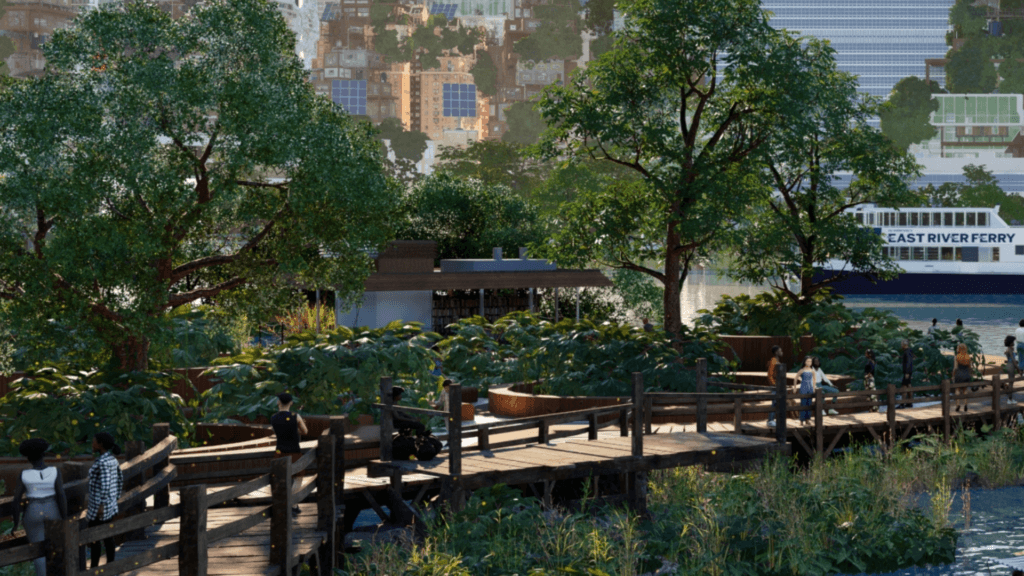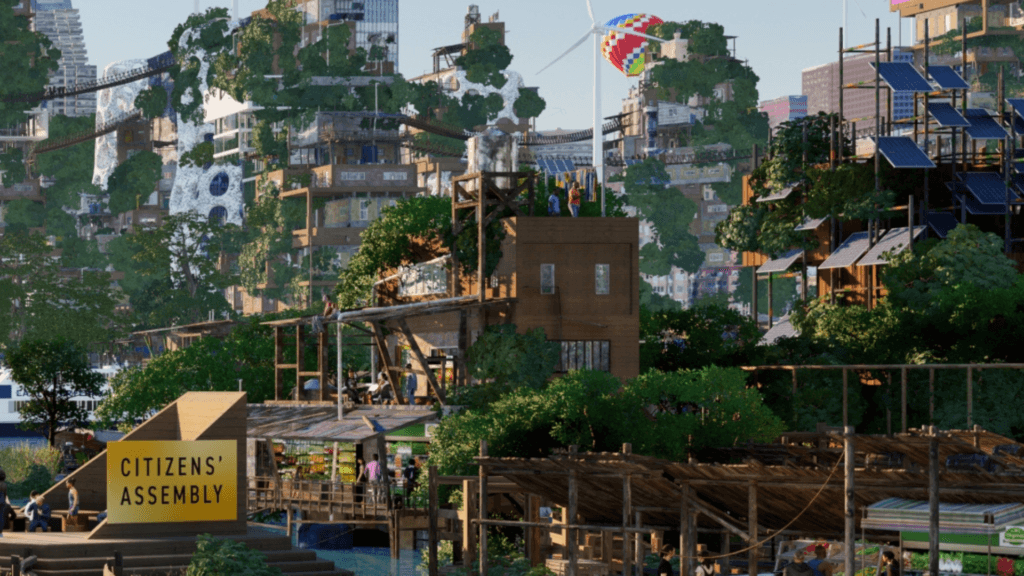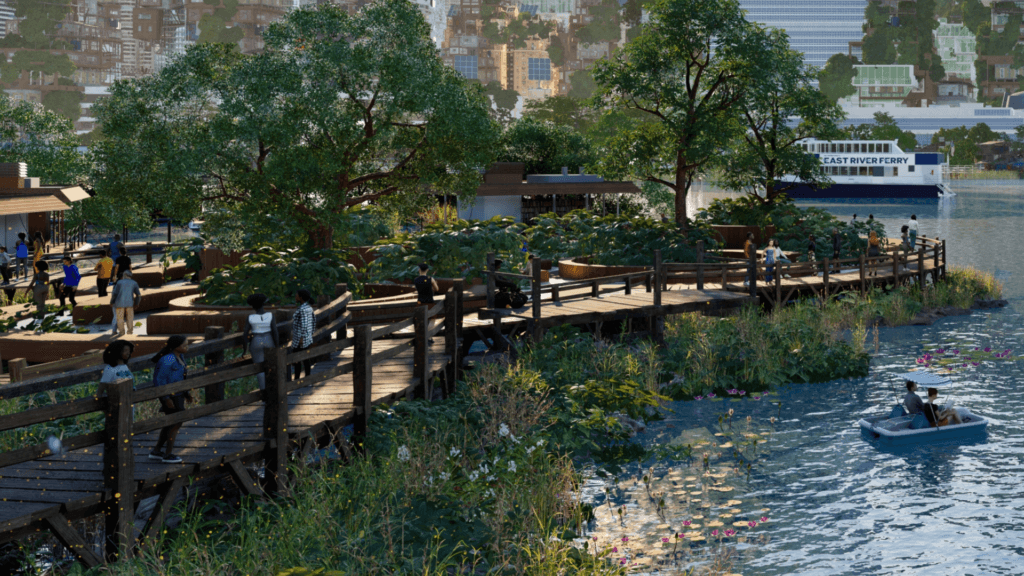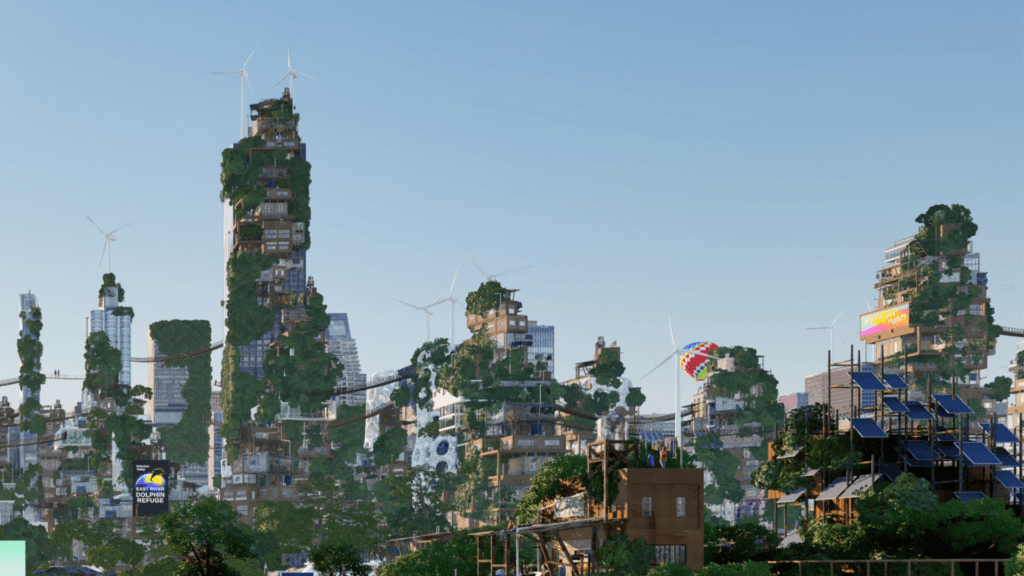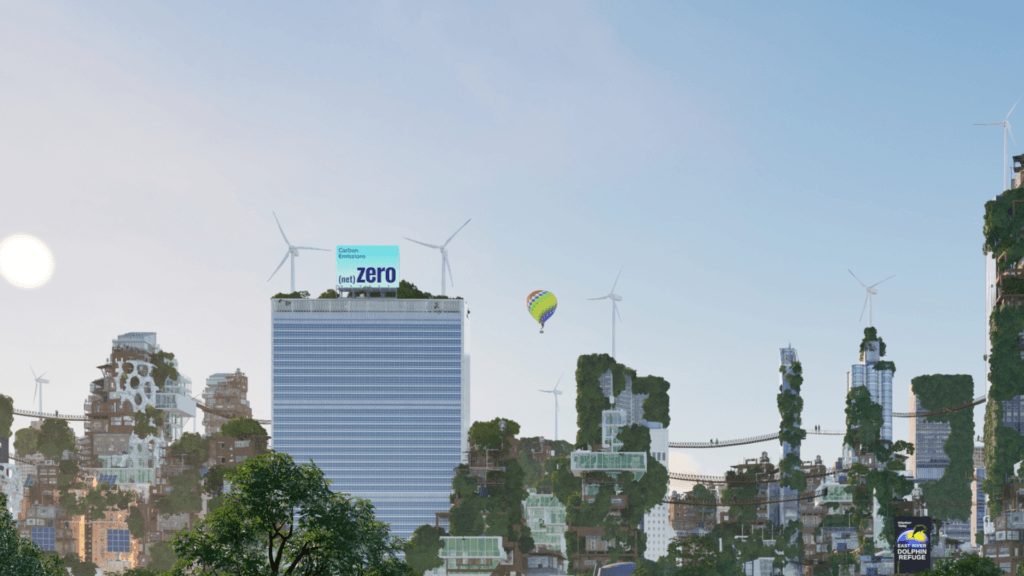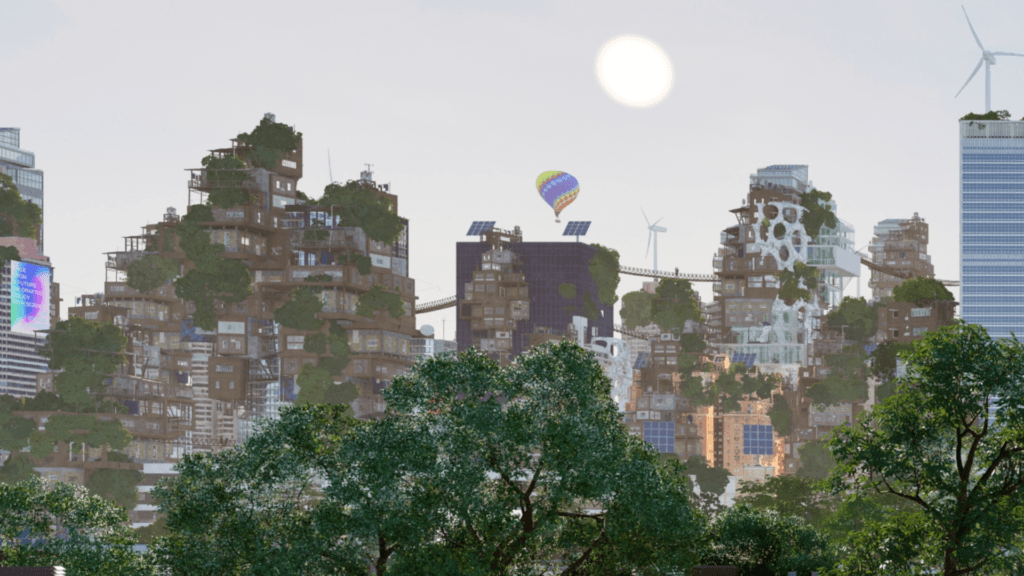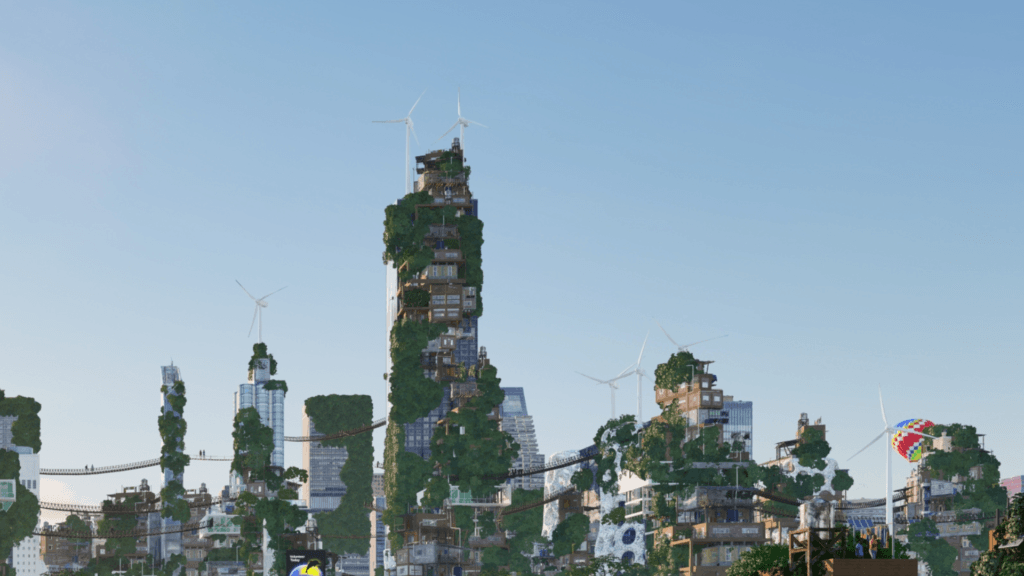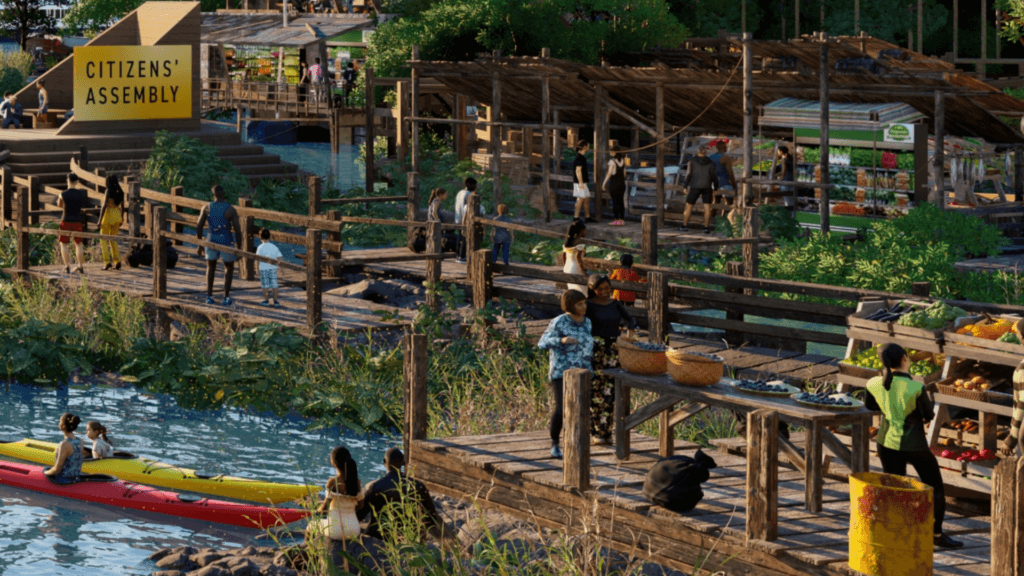Welcome to Once Upon A Future
This immersive virtual reality experience invites you to peer into the future and visit New York in 2075
What if we get it right?
What if we fundamentally reconfigure our economies, energy and food systems so that they work for both people and the planet? Can we avoid the worst of climate change impacts and increase our societies’ resilience to shocks? Will we succeed in ending extreme poverty, guaranteeing everyone a healthy diet and access to quality education and healthcare? In short, what if we get it right?
You’re invited to zoom into the future and explore New York 50 years from now. Take a look at a world that serves us and our planet simultaneously. A society that does more than move money around but delivers good lives to us all. In this Giant Leap scenario, New York City embraces its freewheeling energy, innovation and optimism to become a model of urban climate resilience.
We’ve created two scenarios of New York in 2075 using Earth4All’s data and research analysis. Let’s see what this future holds for us…
Share your experience
Drop by Gantry State Park to peer into the future with our immersive installation from 13-17 September and share your impressions on social media with the hashtag #2FuturesNYC
Too Little, Too Late
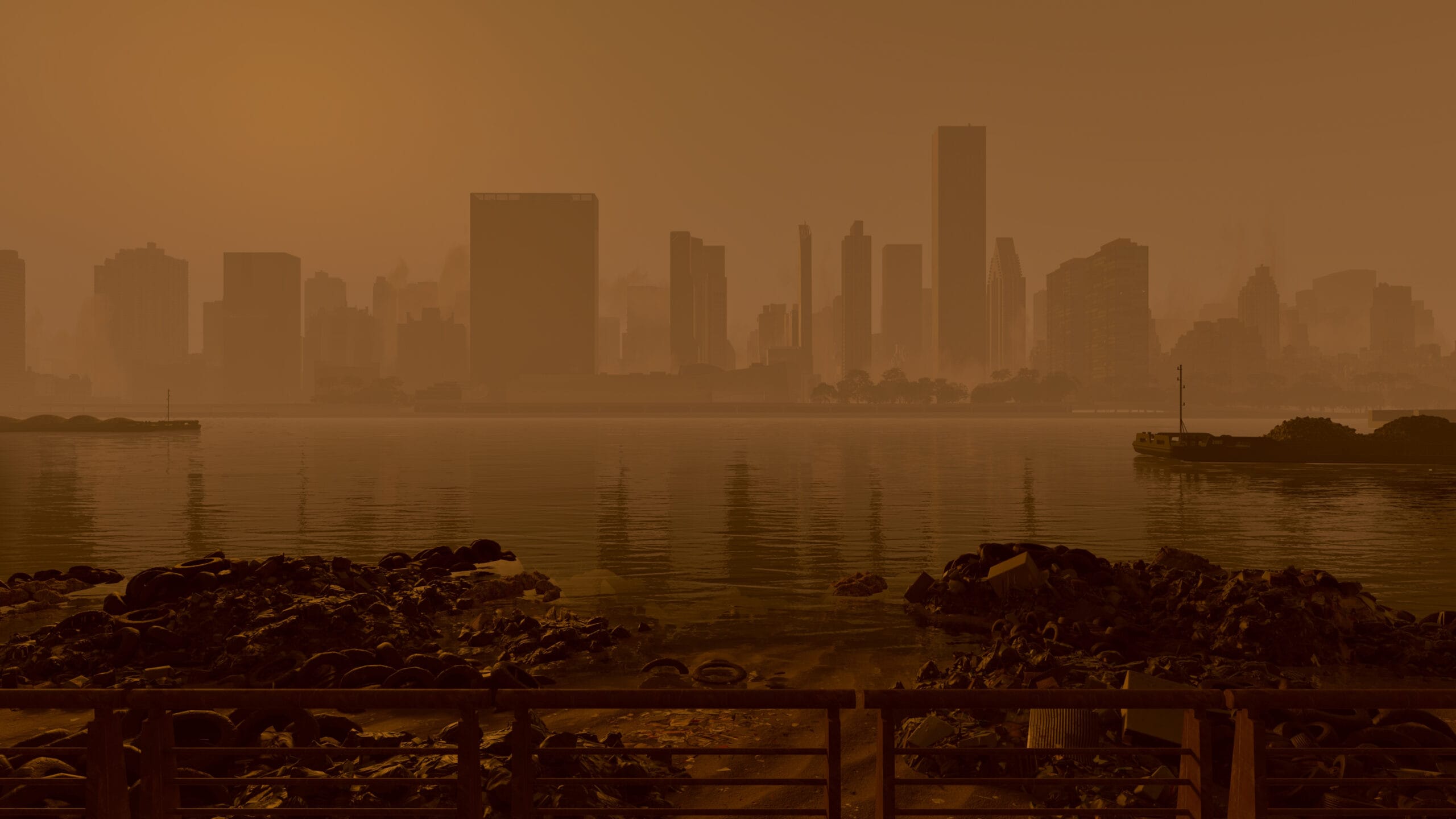
In the Too Little, Too Late scenario, we carry on our current trajectory. By 2075, New York City could face severe climate impacts if greenhouse gas emissions are not dramatically reined in. Extreme heat becomes a defining feature, with the city experiencing up to 85 days per year temperatures above 90°F (32.2°C). This means a rise in death rates among those with underlying health issues, as well as amongst children and senior New Yorkers.
On top of these physical and mental health risks, agriculture will also be impacted, meaning less food, at higher prices. Heatwaves grow more frequent and air pollution worsens, disproportionately affecting more vulnerable populations. Flooding intensifies, economic inequality widens, and gender inequality is also exacerbated, as women often bear a greater burden in climate-related crises.
A Giant Leap

In this scenario, rapid action is taken to reduce emissions (most of New York’s emissions come from buildings and transport) and build resilience, incorporating Earth4All’s holistic approach. A Giant Leap explores the powerful and immediate implementation of five extraordinary turnarounds. In this future, we also see a fundamental reconfiguring of our economy, energy system, and food systems.
Explore the hotspots to discover New York City in 2075
Dashboards: Our Common Future
If the world takes a Giant Leap today, we will succeed in reducing air pollution, increasing biodiversity and stabilising temperature at a manageable level. People will eat healthier diets and there will be less obesity. Longevity will increase. Economic equality will improve. Even if we take the Giant Leap, the world will still heat up. Sea levels will keep rising. But by tackling not just climate and food, but also inequality, poverty and gender, we will have more resilient societies able to cope with change.
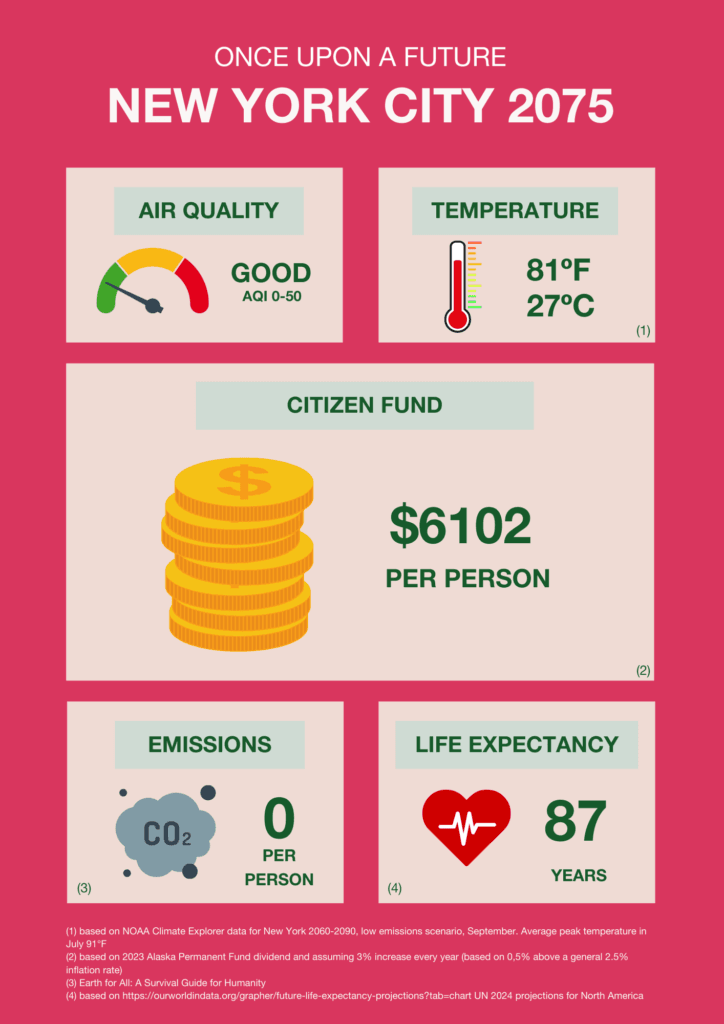
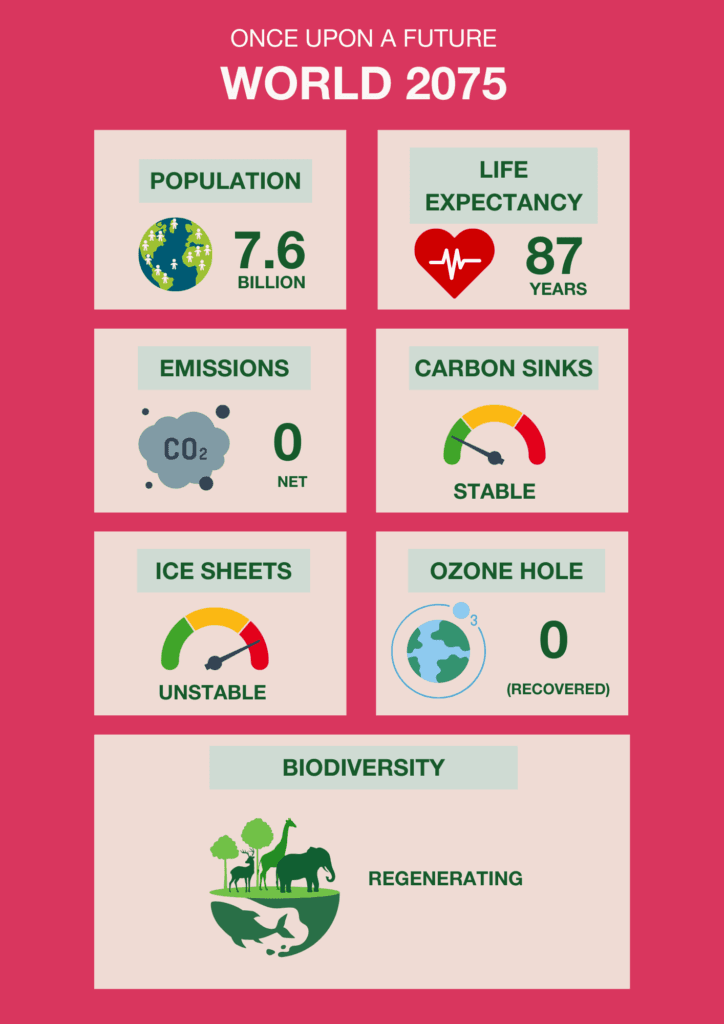
Act now
New York has always been a city of reinvention —the Big Apple never stops evolving.
If we act now, we can ensure that in 2075, cities all across the globe are resilient, forward-thinking, and thriving.
Let’s build that future together.
Project Partners
Stay in touch
Receive the latest news, events and actions for economic systems change. Sign up for our monthly newsletter.






